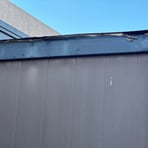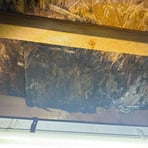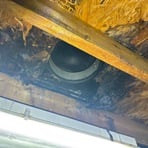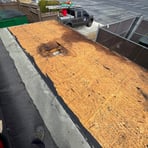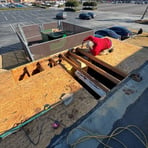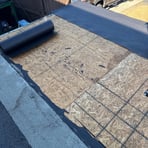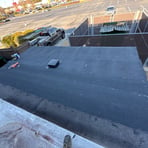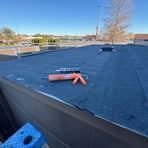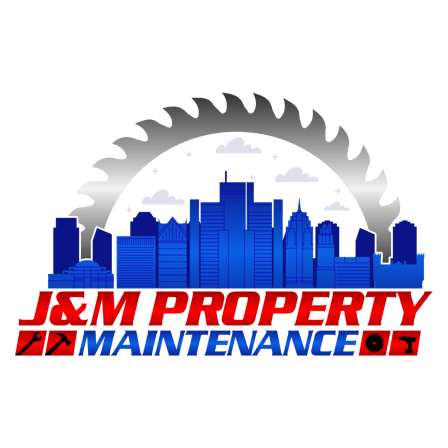Roof Maintenance: The Hidden Cost of Neglect
A building’s roof is its first and most critical line of defense against the elements, yet it’s also one of the most overlooked aspects of commercial property maintenance. Many facility managers only think about the roof when there’s a leak, visible damage, or an urgent repair—by then, the cost has already skyrocketed. Roof maintenance isn’t just about preventing leaks; it’s about extending the roof’s lifespan, reducing energy costs, and avoiding costly emergency repairs. In this guide, we’ll break down why commercial roof maintenance is essential, common issues to watch for, and the best maintenance practices to keep your building safe and operational.
Martin Hunsinger
3/5/20254 min read
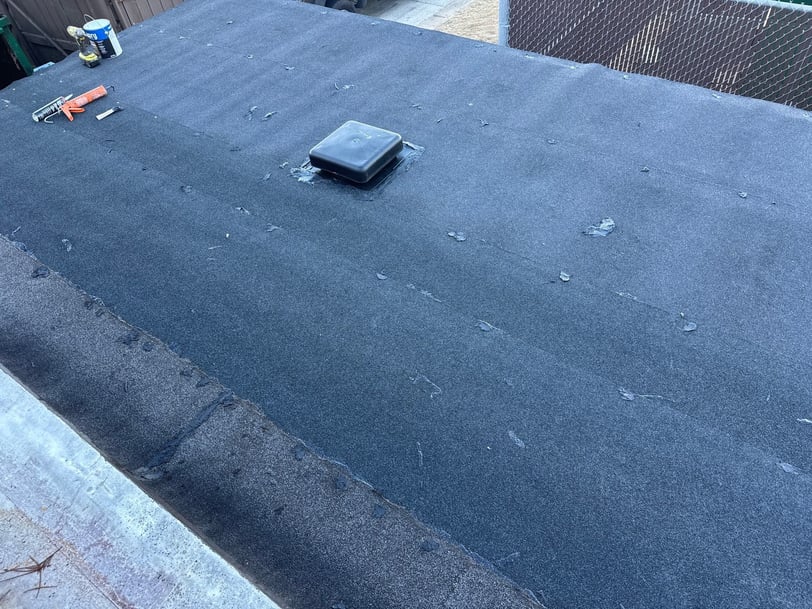

Roof Maintenance: The Hidden Cost of Neglect
A building’s roof is its first and most critical line of defense against the elements, yet it’s also one of the most overlooked aspects of commercial property maintenance. Many facility managers only think about the roof when there’s a leak, visible damage, or an urgent repair—by then, the cost has already skyrocketed.
Roof maintenance isn’t just about preventing leaks; it’s about extending the roof’s lifespan, reducing energy costs, and avoiding costly emergency repairs. In this guide, we’ll break down why commercial roof maintenance is essential, common issues to watch for, and the best maintenance practices to keep your building safe and operational.
Why Roof Maintenance Matters for Commercial Buildings
A neglected roof will fail prematurely, leading to water damage, energy loss, mold growth, and expensive structural repairs. Routine maintenance offers these benefits:
✅ Extends Roof Lifespan – A well-maintained roof can last 25+ years, while a neglected one may need replacement in half that time.
✅ Prevents Costly Water Damage – Leaks can cause mold, rotting beams, and damaged insulation, leading to expensive repairs.
✅ Reduces Energy Costs – A well-maintained roof improves insulation, reducing heating and cooling costs.
✅ Protects Building Value – A solid roof increases property value and ensures compliance with insurance policies.
Ignoring roof maintenance may seem like a way to save money in the short term, but it almost always results in higher repair and replacement costs later.
Common Commercial Roof Problems
Understanding what can go wrong helps you catch small issues before they become major headaches. Here are the most common roof problems in commercial properties:
1. Ponding Water
Flat or low-slope roofs often develop standing water, which leads to leaks, structural damage, and mold growth.
Fix: Ensure proper drainage, clean gutters, and inspect for sagging sections.
2. Cracked or Missing Flashing
Flashing protects seams and roof edges, but over time, it can crack, rust, or detach, creating leaks.
Fix: Inspect flashing regularly and replace any damaged sections immediately.
3. Membrane Damage (For Flat Roofs)
EPDM, TPO, and modified bitumen roofs are prone to punctures, shrinkage, and seam separation.
Fix: Regular inspections and immediate patching of small punctures prevent larger failures.
4. Clogged Drains and Gutters
Leaves, debris, and dirt block drainage systems, leading to ponding and leaks.
Fix: Clean gutters and roof drains at least twice a year, especially before heavy rain seasons.
5. UV and Weather Damage
Constant exposure to sun, rain, and wind degrades roofing materials, causing cracks and deterioration.
Fix: Apply reflective coatings and schedule annual inspections to detect early signs of wear.
6. Poor Installation or Previous Repairs
Low-quality materials, rushed installations, or improper repairs can lead to premature roof failure.
Fix: Always hire experienced roofers and use high-quality commercial-grade materials.
Essential Roof Maintenance Practices
Routine roof maintenance can prevent major repairs and extend the roof’s lifespan. Here’s what every facility manager or handyman should include in their maintenance routine:
1. Schedule Regular Roof Inspections (At Least Twice a Year)
Perform visual inspections every spring and fall to check for cracks, water pooling, or damaged flashing.
Hire a professional roofer once a year for a detailed inspection, especially for older roofs.
2. Keep Gutters and Drains Clear
Clogged gutters are one of the leading causes of roof leaks.
Clean all drains and gutters at least twice a year (before and after storm seasons).
3. Look for Signs of Water Damage Inside the Building
Stains on ceilings or walls often indicate a hidden roof leak.
Check attic spaces or upper floors for moisture or mold growth.
4. Repair Small Issues Immediately
A small crack or loose shingle today can become a major leak tomorrow.
Use roof sealant, patching materials, or flashing replacement to fix minor damage before it spreads.
5. Apply Protective Coatings for Extended Life
Reflective coatings reduce UV damage and heat absorption, improving insulation and preventing material degradation.
Elastomeric coatings can extend a roof’s lifespan by 5-10 years when applied properly.
6. Ensure Proper Ventilation
Poor ventilation traps heat and moisture, leading to roof material breakdown and insulation issues.
Make sure vents are unobstructed and functioning properly.
When to Call a Professional
Some roofing issues go beyond basic maintenance and require a professional’s expertise. Call a roofer if you notice:
🚨 Sagging roof sections – Could indicate structural failure.
🚨 Widespread water damage – Major leaks can lead to mold, insulation damage, and weakened supports.
🚨 Flashing damage around HVAC units or vents – Poor sealing here can lead to costly interior water damage.
🚨 Membrane separation on flat roofs – If seams are opening, water will infiltrate quickly.
The Cost of Neglect: Why Proactive Roof Maintenance Pays Off
Let’s talk numbers. What happens if you ignore roof maintenance?
💸 Cost of Roof Replacement:
Small commercial building: $5,000 – $15,000
Medium-sized property: $20,000 – $50,000
Large commercial complex: $75,000+
💰 Cost of Emergency Leak Repair:
Minor patching: $500 – $2,000
Major structural water damage: $10,000+
🔍 Cost of Routine Maintenance:
Inspections, cleaning, and minor repairs: $500 – $2,500/year
The numbers speak for themselves—spending a little on maintenance saves a fortune in future repairs.
Final Thoughts: Protect Your Roof, Protect Your Investment
A well-maintained roof lasts longer, performs better, and saves money over time. By staying proactive with inspections, cleaning, and minor repairs, facility managers and commercial handymen can prevent costly emergencies and ensure building safety.
Don’t wait for a leak to take action! Make roof maintenance a priority today.
📢 Facility Managers & Handymen: What’s the biggest roofing challenge you’ve faced? Drop a comment below!
